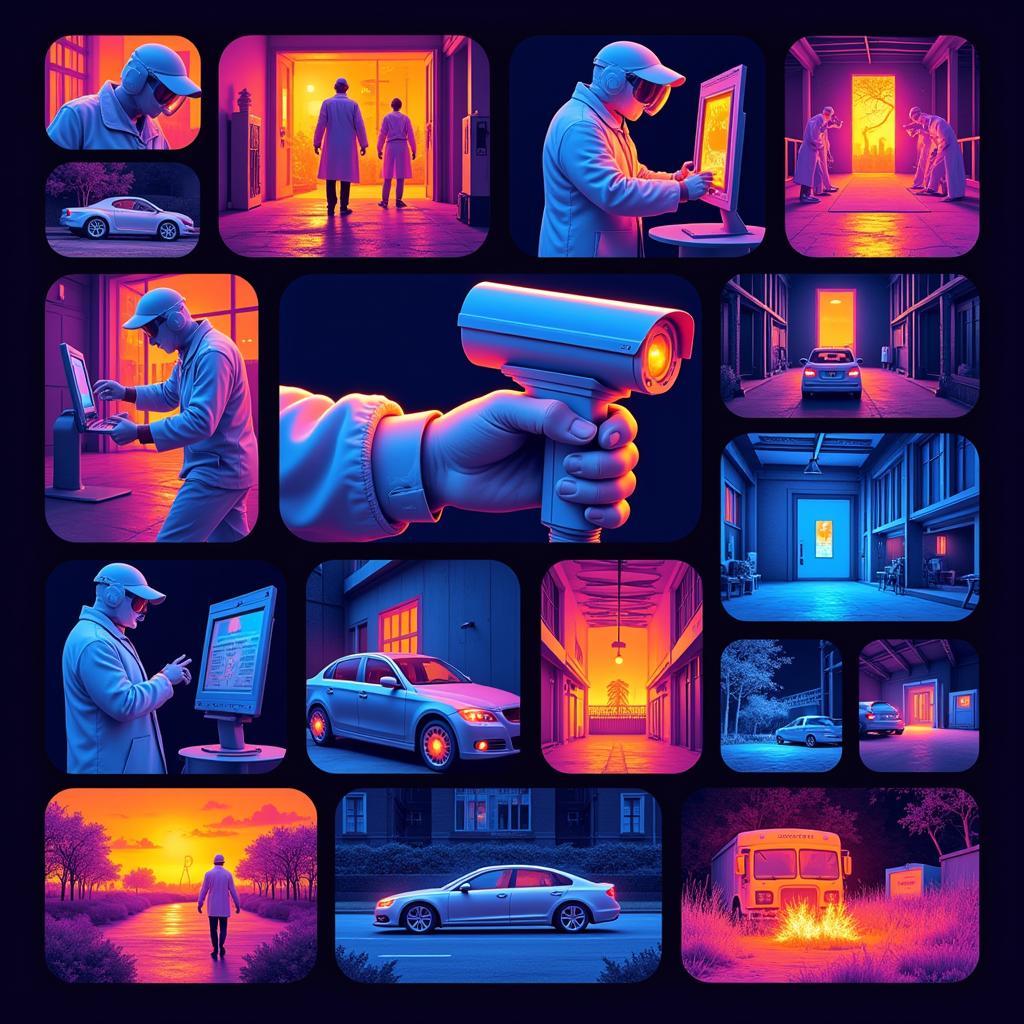You’re looking for a way to see in the dark, but you’re not sure which technology is right for you: infrared camera or night vision? Both allow you to see in low-light conditions, but they operate on different principles and have distinct strengths and weaknesses. Understanding these differences is crucial to make the right choice for your needs.
How Does Night Vision Work?
Night vision devices (NVDs) rely on image intensification technology. They amplify existing light, such as starlight or moonlight, using a series of electronic components.
Here’s a simplified breakdown of the process:
- Light Collection: An objective lens captures available ambient light.
- Image Intensification: The light is funneled into an image intensifier tube, where it strikes a photocathode, releasing electrons.
- Electron Multiplication: The electrons are amplified through a microchannel plate, increasing their number significantly.
- Visible Image Conversion: The multiplied electrons strike a phosphor screen, converting them back into visible light, resulting in a brighter image.
 Night Vision Process Illustration
Night Vision Process Illustration
How Do Infrared Cameras Work?
Infrared cameras, also known as thermal imagers, detect heat signatures instead of visible light. All objects emit infrared radiation, and the hotter the object, the more infrared radiation it emits.
Here’s how they work:
- Infrared Detection: A special lens focuses the infrared light onto an infrared detector.
- Heat Signature Measurement: The detector measures the temperature differences within the scene.
- Thermal Image Creation: The camera processes these temperature differences and displays them as a thermal image, with different colors representing varying temperature levels.
 Infrared Camera Working Mechanism
Infrared Camera Working Mechanism
Infrared Camera vs Night Vision: Key Differences
The core difference lies in what each technology detects: night vision amplifies existing light, while infrared cameras detect heat. This results in several key distinctions:
- Light Requirements: Night vision requires some ambient light to function, while infrared cameras can operate in complete darkness.
- Image Detail: Night vision generally provides more detailed images with better resolution than infrared cameras.
- Color Perception: Night vision typically produces images in shades of green, while infrared cameras use a color palette to represent different temperature levels.
- Obstruction Penetration: Infrared cameras can see through smoke, fog, and some light foliage, while night vision cannot.
- Cost: Night vision devices are generally less expensive than comparable infrared cameras.
Which One is Right for You?
The best choice between an infrared camera and night vision depends on your specific needs:
Choose Night Vision If:
- You need a cost-effective solution for low-light viewing.
- You require high image detail and clarity.
- Some ambient light is available.
Choose Infrared Cameras If:
- You need to see in complete darkness.
- You need to see through obscurants like smoke or fog.
- You need to detect heat signatures, such as body heat.
Common Scenarios and Applications
Let’s explore common scenarios where each technology excels:
-
Security and Surveillance: Both night vision and infrared cameras are widely used for security purposes. Night vision is suitable for well-lit areas, while infrared cameras provide an advantage in complete darkness or for detecting intruders hiding in foliage.
-
Hunting and Wildlife Observation: Hunters use both technologies to track game in low-light conditions. Night vision helps identify animals based on shape and movement, while infrared cameras excel at detecting animals based on their body heat.
 Applications of Infrared Cameras in Various Fields
Applications of Infrared Cameras in Various Fields
- Law Enforcement and Search and Rescue: Both technologies assist law enforcement in nighttime operations and search and rescue missions. Infrared cameras are particularly useful for locating suspects or missing persons by their body heat.
Conclusion
The “Infrared Camera Vs Night Vision” debate boils down to your specific requirements. Understanding the core differences – light amplification versus heat detection – will guide you to the best solution for your needs.
Need help choosing the right technology for your needs? Contact us at Phone Number: 02838172459, Email: [email protected] Or visit us at 596 Đ. Hậu Giang, P.12, Quận 6, Hồ Chí Minh 70000, Việt Nam. Our team is available 24/7 to assist you.